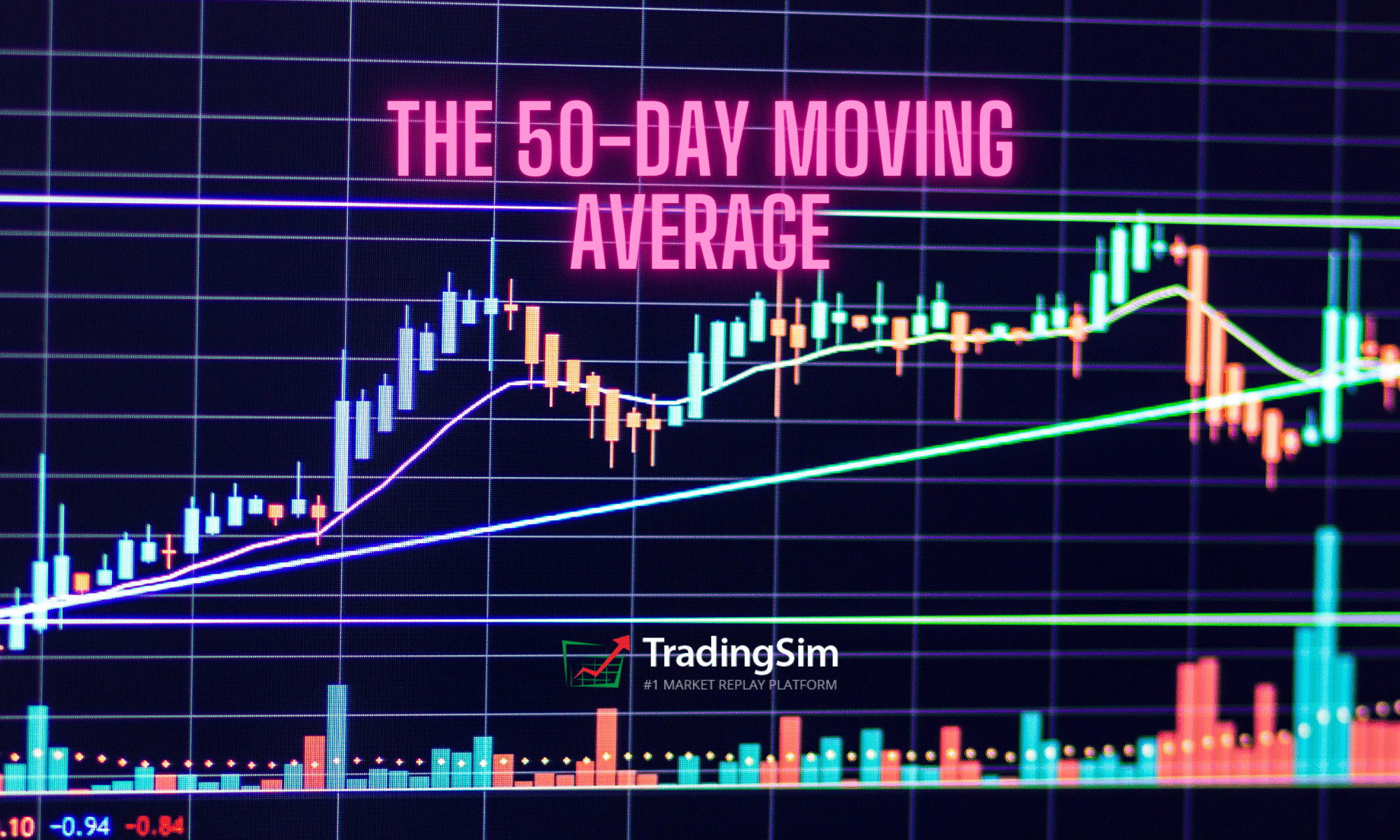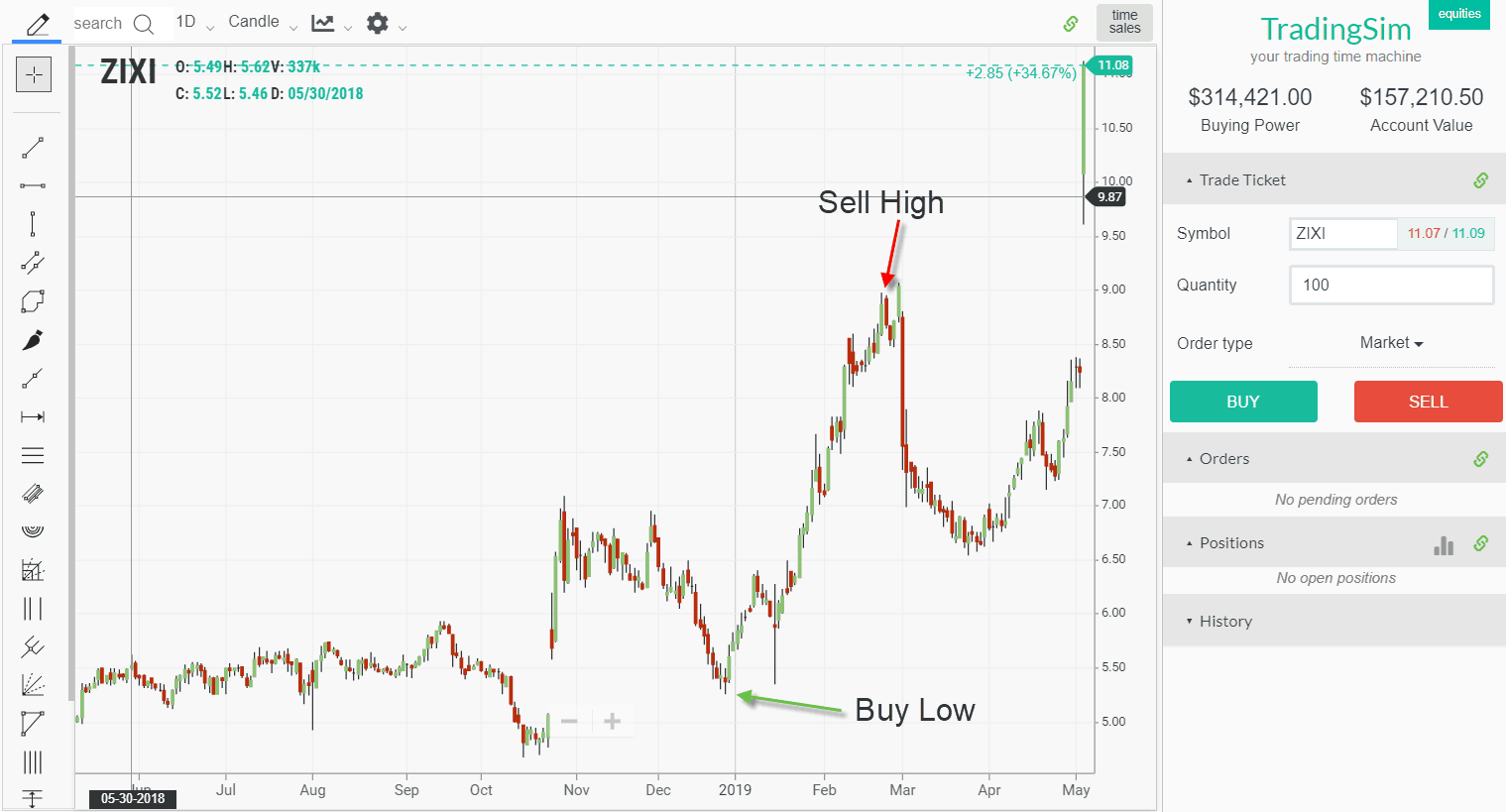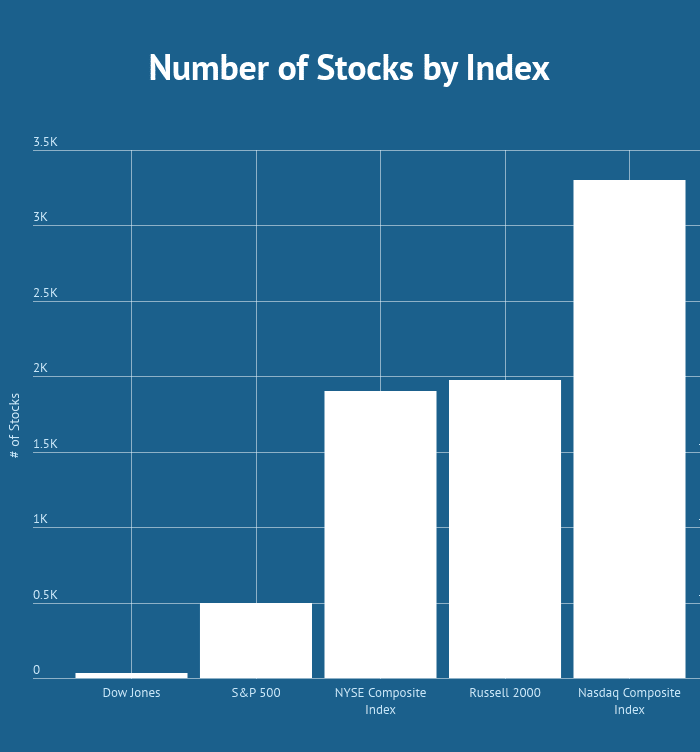
Traders know these events by a few different names. Perhaps you’ve heard of Stockbee and Qullamaggie’s Episodic Pivot? Or you’ve seen @traderstewie refer to his Power Earnings Gap (PEG) plays. If not, then Gil Morales and Dr. Chris Kacher simply call them “Buyable Gap Ups.”
Some other names that get tossed around are “post-earnings drift,” and “momentum gaps.” Regardless of whose team you’re on or what you prefer to call it, they are all representative of a powerful momentum trading strategy. And in this post, we’ll teach you how to recognize them all, with each guru’s spin on how to enter, manage, and exit the trade.
For all intents and purposes, we’ll use the different names interchangeably throughout the post.
The Episodic Pivot
What a cool name, eh? Pradeep Bonde (aka Stockbee) definitely takes home the crown for creativity on coming up with the best name for this strategy. Bonde is a prolific teacher, sharing his wisdom on this strategy and a handful of others on his site, stockbee.biz.
His 2010 blog post on the subject has recently been revived by the popularity of one of his early pupils, Kristjan Kullamägi. Kullamägi, also known as Qullamaggie, is a Swedish trader who started with only a few thousand dollars (after a few blowups) that he saved while working as an overnight security guard. He has since turned this into around $100 million in about a decade.
Qullamaggie’s recent fame came after an accidental $1.5 million dollar loss in a single day on $KODK last year while live streaming on Twitch, and an appearance on the Chat with Traders podcast. Both are worth watching.
Together, these two men teach the following criteria for the Episodic Pivot.
Episodic Pivot Criteria
As the name suggests, there is some kind of episode or event that must occur for the pivot to form. A pivot is an important inflection point in a stock’s history. Many use pivot points on their charts ranging from prior day highs, closes, lows, and even volume markers.
The significance of the episodic pivot is that it generates a massive amount of demand based upon some sort of catalyst, thereby increasing the odds that it will continue the upward momentum for some time.
Typical Catalysts for the Episodic Pivot:
Here are a handful of potential catalysts to consider for episodic pivots:
- Earnings beat
- FDA news
- Media mention
- Analyst upgrade
- CEO change
- New product
- PR release
- Twitter pump
- Trump tweets
- Sales numbers
- Sector/Industry boost
While this is not an exhaustive list, you can see that any number of catalysts can ignite an episodic pivot. The trick is to find the type of pivots that could potentially “drift” higher in the coming days, weeks, or months. The news or event must be very valuable for the company.
Fundamentals and Technicals to look for:
According to Qullamaggie and Bonde, the gap needs to be considerable: 8-10% or more. Not only that, but volume must be a multiple of the average daily volume, like 2x, 3x, 4x or more. Likewise, this volume needs to come in early (think pre-market or first 30 minutes). In other words, you should see the demand in the tape, tangibly.
To that point, entries can often be made in the post- or pre-market depending on the demand and ability to manage risk. We’ll cover entry strategies in a moment.
Other factors to consider are how well the earnings report compared to prior results. Was it a surprise blowout? Also, what was the stock doing leading up to the gap? Was it consolidating in a constructive range, or was it over-extended to begin with? Social sentiment might also be a factor. There are great services available like Investors Business Daily, which may offer a more in-depth look at fundamentals and outlook.
Lower float stocks may have bigger moves (IPOs etc.), according to Stockbee. So, consider the size of the float and the short interest in the stock at the time of the gap.
Consider all these when backtesting to understand why institutions will want to accumulate shares in the stock.
How To Enter Episodic Pivots
When a stock has outlier momentum, it can be difficult to catch the train before it leaves the station. If you’re not keen to fling yourself into the stock after hours or premarket, you might look to enter at the open. Let’s look at how you might do that.
If you’ve been stalking a stock for earnings, you might have it on watch for momentum after the announcement is made at the end of the day or in the pre-market.
Zooming in on an earnings play, we can see what this might look like in order to find a logical entry point.
APPS was a lower priced stock in 2019 that was doing really well gaining market share. After the Covid crash, it had been putting in a fairly long consolidation period. However, in June, it reported stellar earnings and gapped up over 9%.

Notice how the stock closed in the upper range of the day. This is what you really want to see as strength continues to build. Also, note that the volume signature was higher than any prior day in the stocks history, another good sign.
Intraday, we can now dial into the opening range strategy.
The Opening Range Entry

We’ve numbered the 1 minute candles so that you can see the high of what would be the first 5-minute candle. The stock consolidates here off the open, and then breaks out. You now have a low risk entry at the low of the day.
Noticeably, the stock pulled back the next day, but never would have triggered a stop loss order. As a swing, this would have been a stellar move:

APPS went on a post earnings drift of massive proportions. In fact, it put in another Power Earnings Gap in the next quarter. As the company’s revenue expanded, so did its valuation, all the way to over $100.

An insane move, APPS went well over 1000% in 2020 and 2021, less than a year. Clearly, there is something to these Episodic Pivots, Power Earnings Gaps, and Buyable Gap Ups.
Entering the Power Earnings Gap (PEG) on a Consolidation
Not everyone is cut out for the fast paced entry requirements of buying a gap up on the day of earnings. If this is you, then @traderstewie‘s strategy of waiting for the first constructive base may be a better fit.
TraderStewie likes to look for flags, wedges, or volatility contraction patterns after the PEG has formed. Using APPS, let’s see what this might have looked like.

The first opportunity for a flag occurred the 2nd day after the Power Earnings Gap. Notice that the stock is minding the lows of the prior inside candle. If we zoom into the 30-minute chart, we can see a nice flag forming.

Hopefully you can see that APPS is retesting the middle of the largest 30-minute candle on the chart. This is a very common occurrence to retest supply into a significant candle. This candle corresponded with the Opening Range Breakout on the PEG day.
If you missed that entry, entry could be made here on the wedge breakout with risk defined at the wedge lows.
Also of note, the lows of the wedge corresponded with the VWAP Boulevard for the initial gap day, a very reliable pivot that is worth studying.
Larger Time-Frame Consolidation Entries for the Power Earnings Gap
Larger consolidations may also occur after a stock has taken off from a Power Earnings Gap. Just a few weeks after the PEG, APPS put in two beautiful Volatility Contraction Patterns.

Your typical consolidation strategy, like flags, pennnants, cups with handles, can be used for these entries. Again, the idea is that the stock is now entering a growth phase with the initial Power Earnings Gap / Episodic Pivot behind it.
Using the Buyable Gap Up Intraday Low as Risk
What happens if a buyable gap up fades off intraday or never gives us an opening range breakout or flag pattern for entry? Fortunately, there is a strategy for this as well.
Often times a stock will retest the supply levels from the intraday low of the gap day. Gil Morales teaches that if a stock retests the gap, give it a good 3-4% on the downside as a way to manage risk buying the pullback to the low.
Example of a BGU
As a good example, Restoration Hardware (RH) has a habit of doing this for earnings. On June 13th, 2019, we see that RH was trending downward, but launched on a 27% earnings surprise. However, as you can see from the intraday chart, it never broke the opening range. In fact, it faded for the remainder of the day. Despite this, news that Buffett was heavily investing in the stock surfaced and RH never actually filled the gap on the daily chart.


Notice how, if you were employing the Qullamaggie opening range breakout strategy, you would have likely avoided any stop outs. This stock never broke the opening range. However, larger cap stocks are often wont to pull back like this. To that end, they are worth keeping on your watchlist for a bottoming pattern near the intraday low.
Now, let’s look at what occurred in the coming days:

Once the bottom is set on the Buyable Gap Up, you now have an area to risk off of. Morales’s 3-4% “porosity” rule on the downside would have been enough to keep you in the stock if entering at the reclaim of the intraday low. Here is another example of Facebook after earnings:

As the stock pulled back to the intraday buyable gap up low, it held that level as support. Notice also that the stock is emerging from a sound basing structure in the preceding months.
Managing and Exiting the Trade
Most of the educators who teach these strategies recommend a trailing stop using moving averages. This really depends on whether or not you want to hold the stock for a longer time frame. Generally speaking the 10, 20, and 50 moving averages are the more popular averages to manage the position.
Similarly, legendary trader, Bill O’Neil was known for using the weekly charts on stocks he felt could make significant moves. To that point, you might employ the 10-week moving average to keep you in the stock for longer.
In addition, educators like O’Neil and Qullamaggie recommending taking some profits like 1/3 to 1/2 at 20% or 3-5 days into the uptrend. There are a lot of management rules you can employ and it’s best to backtest what works.
Let’s go in reverse order of the examples above and see how this might have played out for each management strategy after the Episodic Pivot / Power Earnings Gap / Buyable Gap Up.
Managing a Trade Using the 10 Moving Average
Using the 10 or 20ma as a trailing stop is Qullamaggie’s recommendation. However, this can be tricky if the 10ma is nearby. Do you close as it touches the 10ma, or closes below it? Morales likes to use a moving average “violation” that he defines as a second close below the moving average as well as below the first candle that violated the moving average. This way, if the stock dips below and then reclaims the moving average, you would still be in the position.
However you want to use this strategy, it’s worthwhile to test in the sim.
Notice how Facebook rides the MA on the first pullback but never closes below. We then get a another run that pulls back dramatically and breaks the 10ma.

One could have also employed Livermore’s Century Rule here as FB hit resistance at the $300 level. Morales preaches this as a popular psychological support and resistance level. Had you taken half at the century mark, and trailed half at the 10ma, you might have increased your gains.
Managing a Trade using the 20 Moving Average
Let’s look at managing our RH example given above using the 20 moving average. Notice how if you simply had a trailing stop, you might have triggered a sell as it tested the 20sma. However, using the “violation rule” of Morales, you’d have a larger gain of around 63%.

Granted, not all episodic pivots are going to “drift” this well. The catalyst for earnings and forecasts should be exceptionally good. But as you can see, a strong trend should mind the 20 moving average well, and in some cases, this might extend your gains on the stock instead of taking profits at the first 10ma break.
Longer Term Management Using the 10-Week Moving Average
As we mentioned above, Bill O’Neil loved to trade on weekly charts in order to cut down on the noise of daily charts. For his management strategy, Bill liked to use the 10-wk moving average to add to his positions for longer term swings.
Let’s use APPS as our example and see what this could have yielded for us.

Bill was wont to add to his position on the first few pullbacks to the 50-week average. Often times this is used by institutions as a buy point. If you have a longer-term vision for a company, you can use this to trail like Qullamaggie suggests, or you wait for a “violation” that actually closes below the first candle that violates the moving average.
If you wait for the violation, the stock would not have stopped you out until the $78 level, a much bigger gain.
You might also note that the stock was approaching the Livermore $100 mark as well, a logical area to take gains.
How to Practice this Strategy
Like all strategies, it takes time to study the subtle nuances of how they work. Qullamaggie suggests at least 2 years. To that end, we suggest starting in the simulator or a backtesting engine to find the biggest winning gaps over a broad time stamp.
Once you identify 100s or 1000s of these examples, dial into what made them work. How did their earnings or news change the character of the stock? What was the size of the float? How big was volume?
Also, dig into the intraday data using our simulator/replay and figure out the best way to enter the stock visually.
Once you have enough of these examples, you’ll drastically increase your confidence in trading them.
Here’s to good fills!
















































